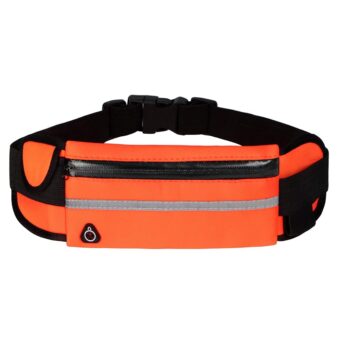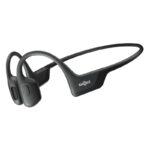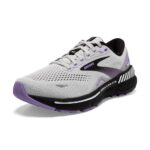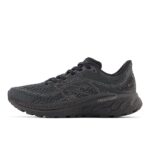Running a marathon is much more than just a physical challenge; it’s a journey of personal triumph, discipline, and growth. Whether you’re lacing up your sneakers for the first time or you’ve got a few 5Ks under your belt, understanding the importance of preparation can make all the difference in your marathon success. Proper preparation doesn’t just mean logging miles; it’s about creating a holistic plan that includes nutrition, training, gear selection, and mental fortitude. Each aspect plays a critical role in how you’ll perform on race day and feel afterward.
For beginners, diving into marathon running opens doors to incredible benefits. It’s not only an excellent way to boost your cardiovascular health but also enhances mental resilience and self-confidence. Completing such an immense challenge can inject new energy into your life goals—whether personal or professional—and introduce you to a supportive community of fellow runners who share similar passions. The road to completing a marathon is paved with hard work and dedication, but with these seven essential tips, you’ll discover strategies that can transform daunting obstacles into achievable milestones.
So why wait? Dive into these insights to uncover how preparation can be your secret weapon in turning dreams of crossing the finish line into reality. Embrace this adventure not as an endpoint but as the beginning of discovering what you’re truly capable of achieving.
Nutrition Tips for Marathon Runners
Making sure your body is fueled with the right nutrients can make a significant difference in your marathon performance. Essential nutrients to focus on include carbohydrates, proteins, and healthy fats. Carbohydrates are the primary energy source for runners and should make up around 60-70% of your diet in the days leading up to the race. Sustainable options like whole grains, sweet potatoes, and bananas provide long-lasting energy that will help carry you across the finish line. Don’t forget protein, as it aids muscle repair and growth; incorporating lean meats, eggs, or plant-based proteins into your meals can be highly beneficial.
Hydration is just as crucial as solid nutrition for any marathon runner. Proper hydration strategies begin well before race day. It’s important to regularly drink water throughout your training but ramp up fluid intake two days before the race to ensure you’re properly hydrated without overdoing it. During longer runs or on race day itself, incorporating an electrolyte-rich sports drink can help maintain sodium balance and prevent cramps caused by dehydration. The urine color test—aiming for light straw-colored urine—is a simple method to monitor hydration levels.
One of the key pitfalls during marathon preparation is consuming foods that could upset your digestive system or negatively impact performance. It’s wise to steer clear of high-fiber foods just prior to racing – this includes beans, broccoli, and other dense vegetables which might cause gastrointestinal distress mid-race. Spicy meals or greasy fast-food are also best avoided due to their potential to lead to discomfort when you really need full focus on putting one foot in front of the other. Finally, steer clear of trying any new foods close to race day; stick with what you know works well with your body during training cycles for optimized results come race morning.
You can look to gel energy supplements or electrolyte drinks to provide the necessary fuel without overwhelming your digestive system. Practicing with these supplements during long training runs will help you understand how your body reacts, ensuring that race day is as stress-free as possible.
In addition to nutrition, it’s crucial to pay attention to hydration leading up to and on race day. Dehydration can severely affect performance, so make sure you’re drinking enough fluids in the days preceding the event. However, avoid excessive amounts right before the start; this could lead to uncomfortable bathroom breaks halfway through your run.
On the morning of the race, aim for a balanced breakfast containing carbohydrates and some protein if time allows—a bagel with peanut butter or oatmeal are both excellent choices. This meal should be consumed at least 1-2 hours before starting to give your body ample time for digestion.
Lastly, mental preparation is equally important as physical readiness. Visualizing yourself successfully completing the course can boost confidence and reduce pre-race jitters. Engage in relaxation techniques such as deep breathing or light stretching before lining up at the start line.
By combining strategic nutritional intake with proper hydration practices and effective mental strategies, you’ll set yourself up for success in achieving your fitness goals on race day!
Training Plans for Novice Runners
Embarking on your marathon journey as a beginner can feel daunting, but setting realistic goals and timelines will ease you into the process with confidence. Start by establishing a specific aim that suits your current fitness level—whether completing the marathon, achieving a particular time, or simply enjoying the experience. Break this major goal into smaller milestones, such as gradually increasing your weekly mileage or improving your pace over time. Use these benchmarks to create a timeline that spans several months leading up to race day. Remember, consistency is key in marathon training, and balancing ambition with realism ensures progress without overwhelming burnout.
Incorporating rest days and cross-training into your schedule is essential for both physical and mental health. Rest days allow your muscles crucial time to recover, adapt, and grow stronger after intense efforts. However, an entire week without movement shouldn’t be necessary; instead, engage in low-intensity activities like walking or yoga on these days to maintain mobility. Cross-training offers additional benefits by strengthening different muscle groups that might not be fully utilized during running alone. Consider swimming or cycling to improve cardiovascular capacity while minimizing wear and tear on joints. By varying your routine, you’ll also safeguard against getting bored—even through the most demanding weeks of training.
Building mileage safely and effectively requires patience and strategic planning. A common strategy among successful runners is the “Ten Percent Rule,” which suggests increasing your weekly mileage by no more than 10 percent each week—thus avoiding sudden leaps that can lead to injury. Additionally, weave in long runs at least once per week; these are pivotal in preparing both body and mind for race distance endurance. Pay attention to “cutback” weeks where you temporarily decrease intensity; they serve as recovery periods allowing assimilation of gains made previously while preparing you for further challenges ahead. Staying attuned to such incremental progress ensures not just completion but enjoyment of your maiden marathon endeavor!
Injury Prevention Strategies
For beginner marathon runners, understanding common injuries and how to prevent them is crucial for a successful experience. Many novice runners face issues such as shin splints, runner’s knee, and plantar fasciitis, often stemming from overtraining or improper technique. Shin splints, characterized by pain along the shinbone, are frequently caused by increasing mileage too quickly or wearing inappropriate footwear. Runner’s knee manifests as pain around the kneecap due to repetitive stress on the joint, while plantar fasciitis involves inflammation of the tissue connecting the heel to the toes, often resulting from inadequate support or excessive high-impact activities.
To mitigate these risks, implementing a comprehensive warm-up and cool-down routine should be non-negotiable. A good warm-up prepares your muscles and joints for physical exertion by gradually increasing heart rate and circulation. Dynamic stretches like leg swings or lunges can activate key muscle groups used in running. Conversely, cooling down post-run aids recovery by reducing muscle stiffness and gradually lowering your heart rate. Light jogging followed by static stretching can help improve flexibility and prevent soreness.
Listening to your body is perhaps the most personalized approach to injury prevention during marathon training. Paying attention to signs of fatigue, discomfort, or persistent pain is essential—there’s wisdom in knowing when to push through minor aches versus when to rest. Developing this awareness allows you to adjust your training intensity accordingly; for instance, if you’re experiencing unusual soreness after a long run, consider substituting your next session with low-impact cross-training like swimming or cycling until you’re back at peak form. This balance helps maintain progress without compromising health, ensuring you’re not sidelined before you reach that much-anticipated finish line.
Items designed to minimize injuries while participating in marathons
- offer an assortment of choices that support both prevention and rehabilitation. Compression apparel, like socks or sleeves, can enhance blood flow and decrease muscle tiredness during extended runs. Foam rollers are exceptionally beneficial for self-myofascial release, aiding in the relief of tight muscle tension after running.
- Additionally, investing in high-quality running shoes tailored to your foot type is crucial; they provide the support needed to prevent overuse injuries. Arch supports or orthotic insoles may also be beneficial for those with specific foot mechanics issues.
- For preventive measures outside of everyday training equipment, consider using topical pain relief creams or patches infused with menthol or capsaicin. These can relieve discomfort quickly without the need for oral pain medication.
- Nutrition plays an essential role in injury prevention as well—ensuring you’re adequately hydrated and consuming anti-inflammatory foods can help maintain optimal muscle function. Supplements like omega-3 fatty acids and turmeric may contribute positively by reducing inflammation.
- Finally, incorporating regular strength training into your routine not only builds muscle but also bolsters joint stability—which is vital when enduring the rigors of marathon training. Balancing all these aspects creates a comprehensive approach that’ll keep you healthy on your journey toward that finish line while maximizing performance potential along the way.
Choosing the Right Gear
Selecting the right gear is crucial for marathon success, especially when faced with the unpredictable elements of cold weather. An insulated, wind-resistant jacket can be your best friend on race day, protecting you from chills without trapping excessive body heat. Don’t forget a good pair of thermal gloves and a moisture-wicking hat to keep extremities warm yet breathable. Layering is key—wear a lightweight base layer that wicks perspiration away to help regulate your body temperature as you conquer those miles.
When it comes to shoes, there are a few essential features every beginner marathon runner should prioritize. Look for shoes that offer ample cushioning and support to absorb the impact of repetitive pavement pounding. A snug yet comfortable fit helps prevent blisters and other friction-related injuries; thus, it’s often wise to size up half a shoe size compared to your regular casual footwear allowance for swollen feet over long distances. Remember to assess the tread pattern as well—opt for soles that enhance traction if your race route includes uneven or wet terrain.
Moisture-wicking clothing plays an integral role in maintaining comfort during marathons by pulling sweat away from your skin like magic, which reduces both chafing and cooling too quickly post-sweat evaporation. Clothing made from advanced synthetic fibers such as polyester blends or merino wool is excellent because they’re lightweight while also deodorizing efficiently—a hidden advantage worth considering after hours on the trail! Prioritize seamless designs to minimize any chance of irritation and test out several options during training before settling on what feels right for you. With tailored gear choices adapted for specific conditions, you’ll transition through varying race day environments feeling equipped and ready to perform at peak all along your run!
Best Marathon Training Programs
For beginner marathon runners, selecting the right training program can be a game-changer for ensuring success on race day. Popular training plans such as the Hal Higdon Novice 1 and Jeff Galloway’s run-walk method are tailored specifically to those just starting out. These programs focus on gradually building endurance while incorporating walk breaks that give your body time to adapt safely to increased mileage. By providing structured guidance, these plans help alleviate the anxiety of preparing for your first marathon, empowering you to stride confidently toward the finish line.
When considering different training timelines, it’s essential to weigh the pros and cons of a 10-week versus a 16-week program. A 10-week plan might appear short but works effectively if you already have a fundamental fitness base. It’s more intensive and requires dedication but is perfect for those with tight schedules or when spontaneous opportunities arise. In contrast, a 16-week program offers a more gradual increase in mileage and intensity, which benefits muscle adaptation and reduces injury risk. With more leeway for unexpected interruptions like minor injuries or personal commitments, this extended timeline supports sustainable progress.
In today’s digital era, leveraging running apps and online resources can provide additional support for marathon training. Apps like Strava or MyFitnessPal not only track distances and times but also connect you with vibrant communities of runners who encourage and motivate one another. Meanwhile, platforms like Runner’s World offer access to articles, videos, and expert advice covering every aspect of training from nutrition tips to mental strategies. These tools allow you to customize your journey according to your unique needs while keeping motivation high throughout the process—helping transform your marathon aspirations into realities step by step.
By thoughtfully selecting from these available resources and adapting them to fit personal circumstances, beginners set themselves up perfectly for crossing that coveted finish line on race day with confidence. Remember: every mile covered during training builds not just stamina but also resilience—a true testament that success lies as much in the journey as it does in reaching the destination itself.

Mental Preparation Techniques
Mental preparation is just as crucial as physical training when it comes to marathon success. One powerful technique that many athletes use is visualization, which involves vividly imagining yourself successfully completing the race. This method can help reduce anxiety and boost confidence because your brain becomes accustomed to the idea of success. Consider setting aside a few minutes each day to close your eyes and envision every aspect of the race, from feeling strong at the start line to crossing the finish with energy. This mental rehearsal can condition your mind to stay focused and resilient, no matter what challenges arise on race day.
Keeping motivation high throughout months of training can be difficult, but there are several strategies you can employ to maintain enthusiasm. Setting small, achievable milestones can provide a sense of accomplishment along the way—such as running consistently for a week or hitting a new personal best in a shorter distance run. Reward yourself for these victories with something motivating, whether it’s new gear or a favorite treat. Additionally, connecting with other runners through clubs or online forums can provide moral support and camaraderie; sharing experiences often reignites passion for the journey.
Mindfulness practices during long runs are another excellent tool to keep your mental game strong. By focusing on your breathing or syncing footsteps with breath, you hone awareness and anchor your mind in the present moment rather than worrying about miles ahead. Mindfulness encourages an appreciation for the act of running itself and helps manage pain or discomfort by reducing stress responses in the body. You might find that incorporating short meditative approaches such as counting steps or silently repeating motivational mantras makes each mile more manageable and enjoyable. With enhanced mindfulness skills, you’re more equipped not only for race day but also for embracing each step of your marathon journey fully—mind over matter truly does make all the difference.
Race Day Essentials
Preparing for race day involves meticulous planning and a well-thought-out checklist to ensure everything goes smoothly. Start by laying out all the gear and necessities you will need the night before. This includes your bib number, timing chip, comfortable running attire suited for the weather, shoes that you’ve broken in during training runs, and socks designed to prevent blisters. Also pack necessary nutrition such as energy gels or bars that you’ve used during long runs, ensuring none of them will upset your stomach. It’s crucial to have an easily accessible hydration method—be it a handheld bottle or a water belt. Don’t forget lesser-known essentials like body glide to prevent chafing and sunscreen if you’ll be exposed.
On race day, pacing yourself effectively is vital for maintaining endurance throughout the marathon. It can be tempting to start fast with the crowd’s excitement pushing you forward; however, sticking closely to your planned pace will help avoid early burnout and save energy for later stages of the race. Consider using a GPS watch or running app that monitors your speed and distance in real-time, allowing you to make necessary adjustments as you progress through each mile marker. Additionally, integrating walk breaks strategically from the get-go—especially if you’re new to marathons—can conserve your strength for challenging terrains or inclines.
Staying positive and focused is indispensable as mental fortitude greatly influences performance on race day. Adopting a mantra or reminder phrase that uplifts you when fatigue sets in can provide quick motivation boosts. Practicing mindfulness techniques learned from training can also come into play here; concentrate on each breath and step rather than how many miles remain until the finish line. With spectators cheering along various points of the course and volunteers offering aid stations of encouragement, use these interactions as fuel to keep going strong even when moments feel toughest.
In conclusion, preparing adequately with a thorough race-day checklist ensures no detail gets overlooked amid pre-race nerves. Maintaining optimal pacing prevents exhaustion prematurely draining valuable energy reserves needed for an enduring finish time while embracing positivity keeps mind over matter truly achievable despite any challenges faced amidst completing what remains arguably one long ‘goal’ crossed every kilometer/mile achieved successfully towards realizing true marathon success itself!
Overcoming Challenges During the Race
When it comes to marathon running, encountering fatigue and cramps is not uncommon, but there are effective strategies to push through these hurdles. Firstly, it’s imperative to pace yourself consistently throughout the race. Many beginners start too fast due to adrenaline spikes—resist this urge. Instead, adopt a steady pace that matches your training runs. If fatigue strikes, consider using interval running; alternate between short bursts of jogging and walking until you regain your strength. To combat cramps, ensure you’re fueled with electrolytes either through sports drinks or supplements mid-race, which can aid in muscle function and endurance.
Another invaluable aspect of marathon races is the incredible support network available along the course. Keep an eye out for spectators who often come armed with encouraging signs and cheers that can provide much-needed boosts of morale when energy levels wane. Engaging with volunteers at hydration stations can also be uplifting—expressing gratitude for their efforts creates a positive exchange that might just give you a second wind. Remember, every smile exchanged is energy shared!
It’s crucial to remain adaptable if things don’t go as planned during the race—a hallmark trait of seasoned marathoners. Adjust your expectations based on real-time conditions such as weather changes or unexpected physical distress. Random aches should be assessed: if they’re minor, slow down or stretch slightly before proceeding; however, significant pain warrants re-evaluation of completion goals to prioritize health over finish times. Embrace any deviations from what was intended as part of the experience—after all, succeeding in a marathon is about resilience and enjoying the journey just as much as crossing the finish line itself.
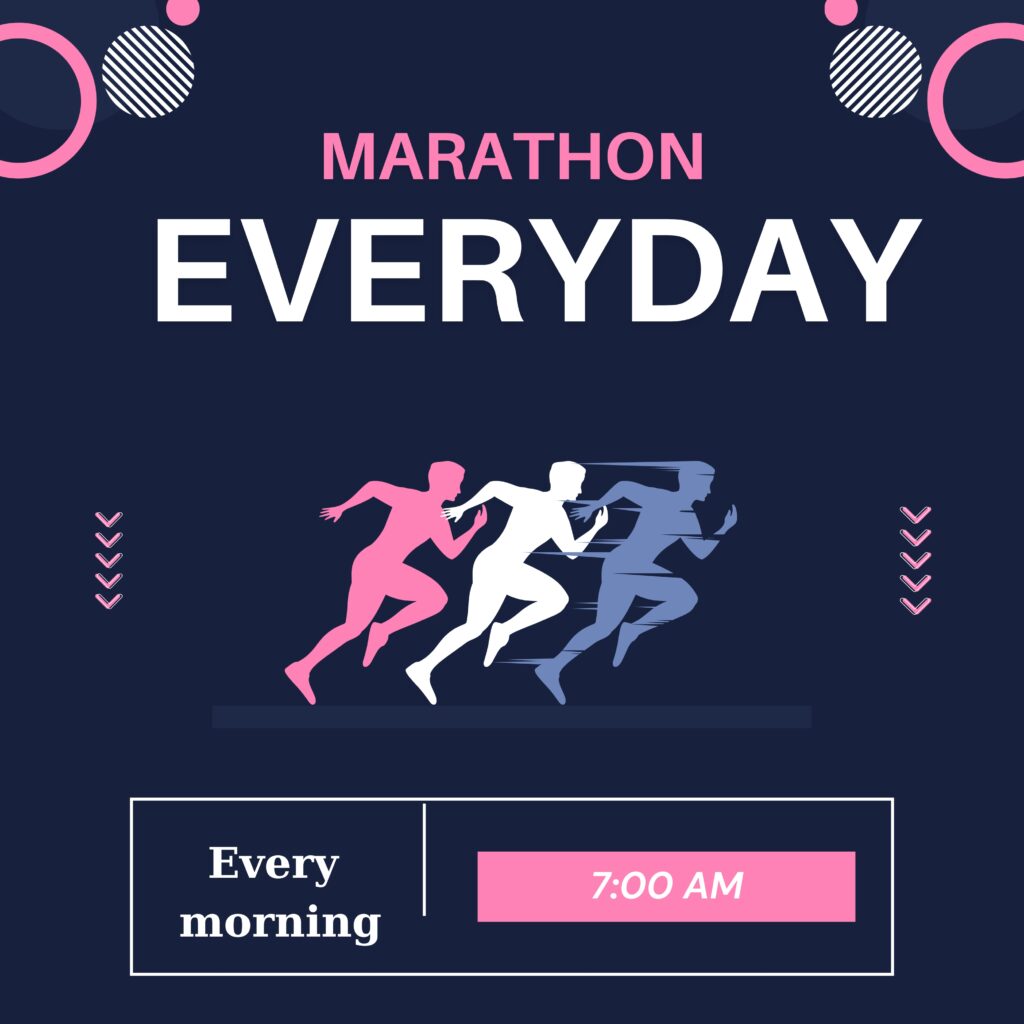
Embrace the Marathon Journey
As you set out on this exhilarating marathon journey, remember that each run is a stepping stone toward not just a finish line, but a greater sense of self-discovery and accomplishment. By prioritizing nutrition, training wisely, and staying mindful of your body’s needs, you will cultivate both physical strength and mental resilience. Embrace the ups and downs with enthusiasm, for they are all part of the adventure that makes running so rewarding. Celebrate every milestone along the way, no matter how small, as these moments define your unique experience. So lace up those shoes with excitement and take that first step—your marathon awaits!
Don’t wait another moment to transform your journey into something truly extraordinary—join our community of passionate runners today! With limited-time access to exclusive training plans and nutrition guides tailored just for you, there’s no better time than now to supercharge your marathon preparation. Lace up those shoes, seize this opportunity, and let every stride bring you closer to conquering not just the race, but the incredible version of yourself that awaits on the other side!



